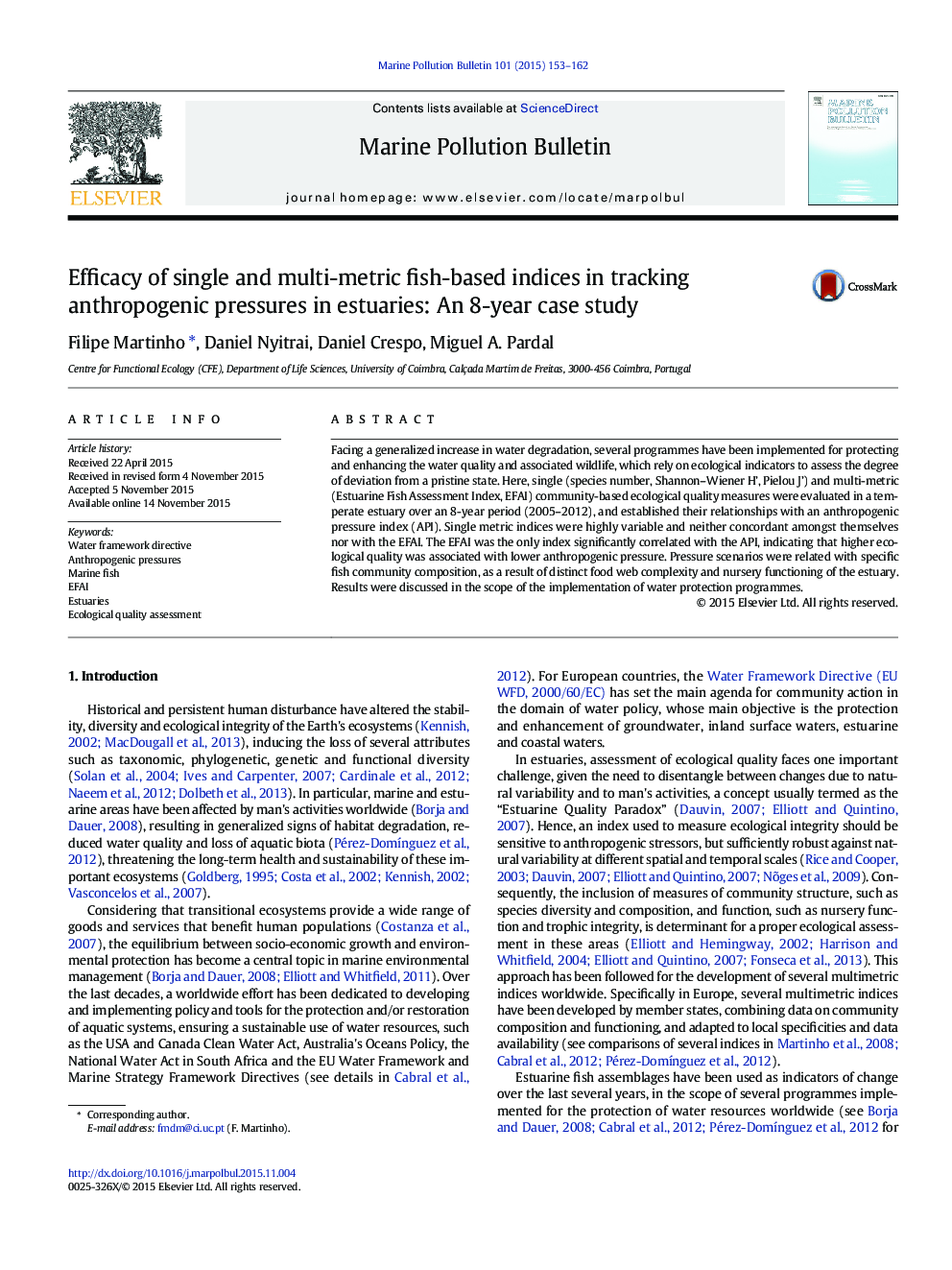| Article ID | Journal | Published Year | Pages | File Type |
|---|---|---|---|---|
| 4476598 | Marine Pollution Bulletin | 2015 | 10 Pages |
•A decreasing trend was observed in anthropogenic pressures in an estuary for 8 years.•Single-metric indices only correlated with individual anthropogenic pressures.•The multi-metric EFAI was correlated with a declining global anthropogenic pressure.•Higher ecological quality was linked to higher abundance of marine migrant and piscivorous fish.•Higher ecological quality reflected higher food web complexity and nursery functioning.
Facing a generalized increase in water degradation, several programmes have been implemented for protecting and enhancing the water quality and associated wildlife, which rely on ecological indicators to assess the degree of deviation from a pristine state. Here, single (species number, Shannon–Wiener H’, Pielou J’) and multi-metric (Estuarine Fish Assessment Index, EFAI) community-based ecological quality measures were evaluated in a temperate estuary over an 8-year period (2005–2012), and established their relationships with an anthropogenic pressure index (API). Single metric indices were highly variable and neither concordant amongst themselves nor with the EFAI. The EFAI was the only index significantly correlated with the API, indicating that higher ecological quality was associated with lower anthropogenic pressure. Pressure scenarios were related with specific fish community composition, as a result of distinct food web complexity and nursery functioning of the estuary. Results were discussed in the scope of the implementation of water protection programmes.
